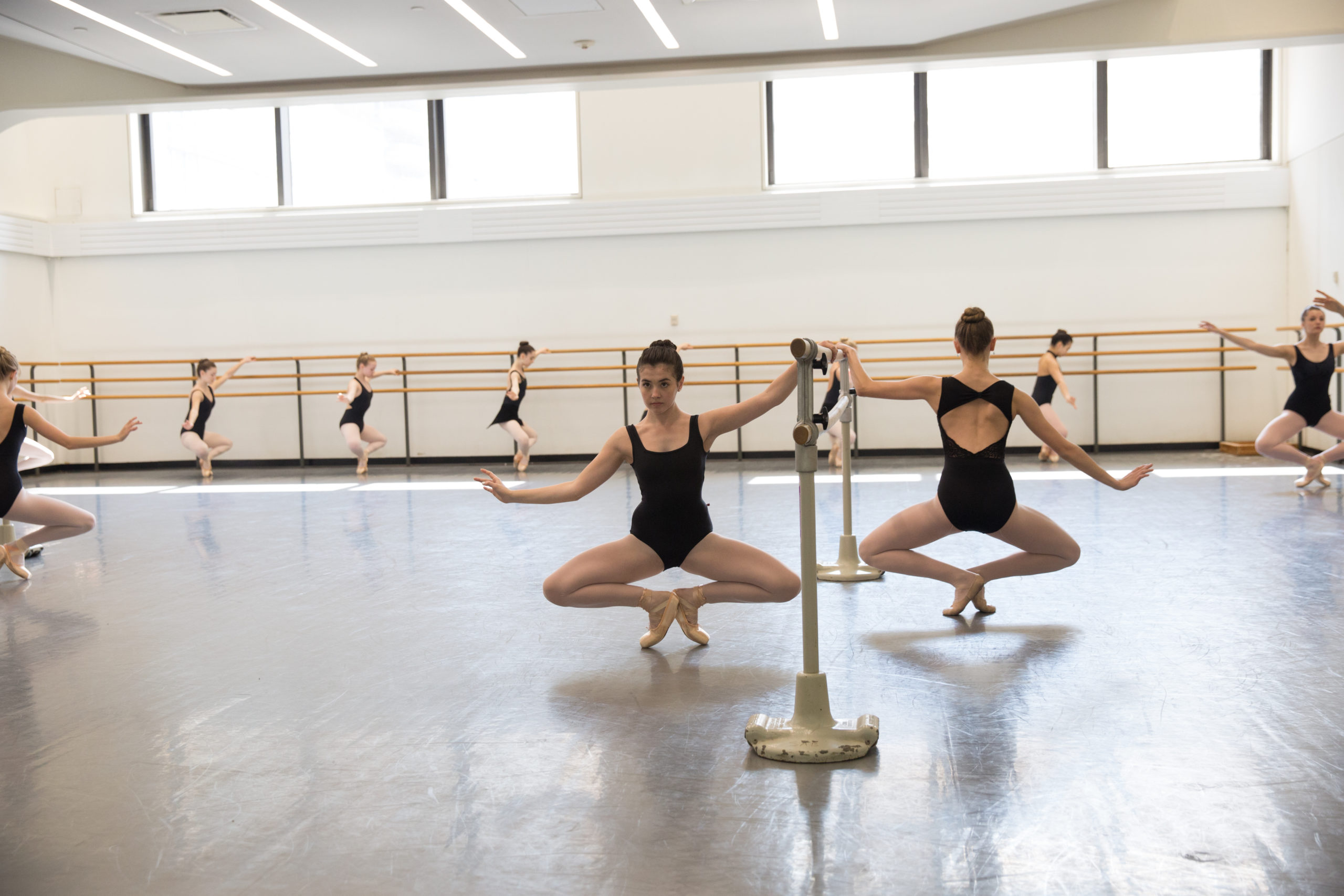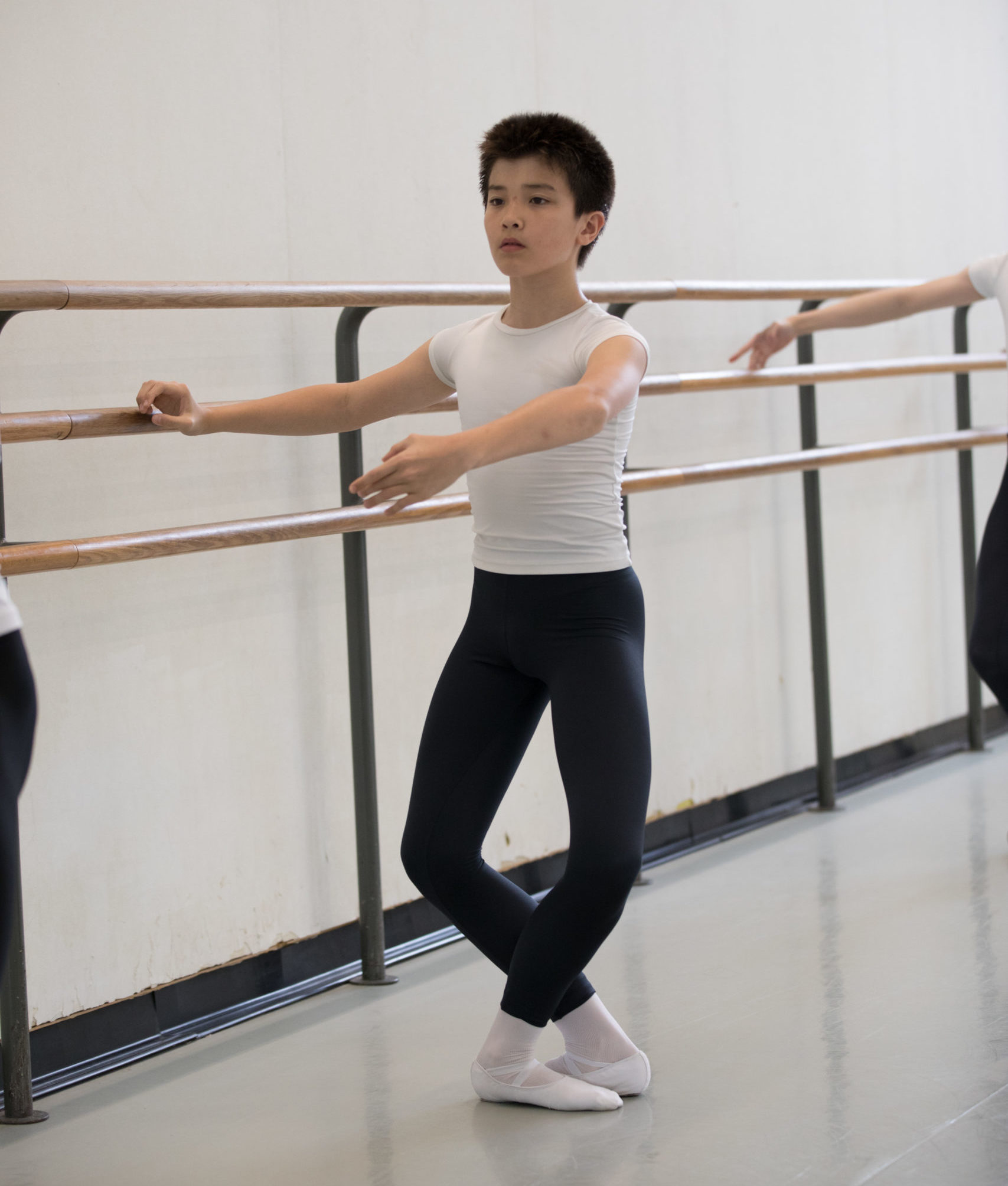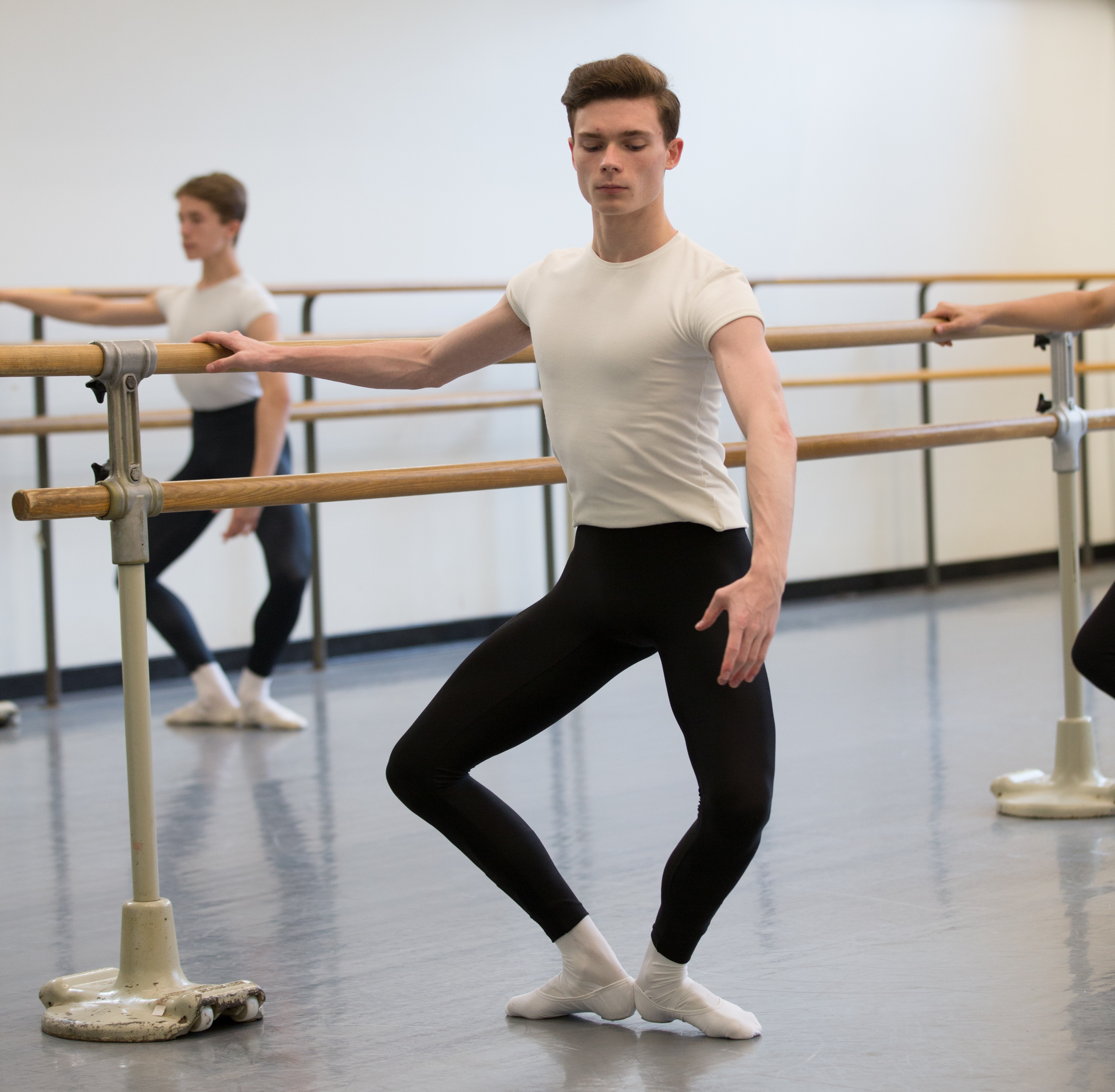Pliés – from the barre to big jumps, pliés play a critical role in the makeup of every class and are integral to ballet technique. Today we continue our Suki Says series with an excerpt focusing on the very basic principles of plié in Balanchine’s classes.

Plié is probably the most important movement in ballet. It joins or links each movement to the next.
“You don’t do plié to warm yourself up. It is a special step that has to be developed. Everything comes from it.”
Plié is to dance as breathing is to life: It never stops. The moment it stops, the movement dies, the dance is finished.
Both demi-plié and grand plié are continuous, uninterrupted movements. There is often a sense that the demi-plié is separated from the grand. On the contrary, the plié should be continuous. There is no stop or change in speed at the moment when the heels release. When they do release, the dancer should keep them as close to the floor as possible as she continues down. On the return she should bring them back to the floor as soon as she can without any pause or hesitation as she moves through demi-plié.

The central purpose of plié is to collect energy. “The knee and the ankle bend together. It is not just one bend, it is two. Double force like double engine with two pieces working for you.” This collection of energy is enhanced by bending with resistance…
Turnout is an integral part of plié. As the dancer starts to descend, she turns out from the hips, bringing the inside of her thighs front so her knees are bending over her toes. As she ascends, she feels as if she turns her legs out even more – to the maximum. When moving into grand plié, the weight is in the middle of the balls of the feet. As the heels release and come ever so slightly forward, the dancer keeps the weight in the middle of the balls of the feet, not rolled in, but also not rolled to the outside. This helps to maintain the turnout and keep the heels front. At the bottom of grand plié in fifth position the back heel should maintain contact with the front heel.

The plié takes the same time to go down as to come up, but within this equality there is variation, there is phrasing. After the clearly articulated, relatively quick start, the plié slows as the dancer continues down, gathering energy. The plié also starts back up quickly, but slows as the knees straighten. Because the dancer turns out even more at this point, there is a braking action that slows the end of the ascent and thus reveals or announces the end of the movement.
The plié starts down without delay, beginning exactly on the first beat of the music, helping to show the beginning of the movement. Often dancers delay the beginning of the plié. It seems that they are not yet fully alert, completely ready for class, so they don’t start down right on the one of the music. Instead, they start late and creep into the movement. When this happened, Mr. B would clap his hands to stop the music and tell us, “You’re already late!”
We had barely begun the first exercise at the barre, and already we were behind. So we would start again. His insistence on musical precision from the first moment of class made clear how important musicality was to him. It also reminded us that the plié in class was neither a casual warm-up nor a throwaway stretch, but an essential part of the work we needed to be ready to do.

As I mentioned before, it is very important that the music not suggest unwanted divisions in the plié. Mr. B often asked for something in triple meter, such as a slow three, which we danced one count down, one count up, and one count to open the arm to second. An alternative was a slow four: We went down on count one, came up on count two, opened our arms on count three, and held count four. Other good alternatives are a chord with the pedal held to mark each descent, or an arpeggio. It is also important that the music not be sentimental, because the dancer should not indulge in sentimentality in class. Pliés with the qualities I have described (resistance, turnout, phrasing, etc.) demand full awareness. The dancer should not melt into the floor full of feeling or to search for her soul. Although he was specially interested in our mastering very slow, controlled pliés while jumping, Mr. B gave the first pliés at the barre at a faster tempo than is the practice in most other schools. The grand pliés at the barre usually took about two seconds down and two seconds up.
During plié we mostly held the body upright, with the head straight front in a regal and proud position, slightly lifted, eyes directed out and front. Aside from slight adjustments in head level, very little changed; above all, we did not do the detailed bending and tilting favored by many teachers. “The head should not be involuntarily involved.”
…I noted that this book is intended primarily for advanced and professional dancers, because some technical details vary at that level. One example is the faster tempo of the plié. Another is the heel in demi-plié. In early training it is important that the children learn to keep the heels down in demi-plié. At that age they are learning the most basic ballet technique, so they need to attain the control of the release of the heels. And we want them to stretch their tendons so that they have the deepest possible demi-plié. However, advanced dancers have that control and may, if necessary, release the heels in demi-plié. They may need to release due to the tempo of the step, the depth of the plié, or the shortness of their Achilles tendons. It is more important to have a full, juicy, dynamic demi-plié than to keep the heels glued to the floor.

A rigid emphasis by the teacher on the heels being down in the advanced or professional dancer will tend to produce a much less mobile dancer, because demi-plié is about bending the knees to collect energy for the next step, not about keeping the heels on the floor. Plié is not done in the Achilles tendon, and the dancer’s awareness should not be directed there; plié is a bending of the knees controlled in the thighs. The heels should be kept down as long as possible, but they often release when a deeper demi-plié is needed to make the next step what it should be. The more crossed the position (i.e., fourth and fifth), the more difficult it is to achieve a deep demi-plié with the heels down. Therefore, in these positions dancers with shorter tendons often need to release the heels slightly to accommodate the fuller demi-plié. Whether or not the heels are kept on the floor in demi-plié, it is vital to the movement that the weight remain over the balls of the feet and that the plié never stop.
We usually began the barre with two grand pliés in each position: first, second, fifth front, and fifth back. This took care of our grand pliés. There was no need to turn to the other side, because first and second are the same, and we had done both fifths. Mr. B almost never gave grand plié in fourth position, because it puts unnecessary stress on the knees, is rarely used when performing, and because pliés in fifth build the same strength in the legs.
|
Essential Details in Plié
Back straight (shoulders over hips, hips over feet), especially in grand plié; maintaining the turnout; hips pulled up and knees in line or over the toes
Lift up to go down; no tilting forward, back, or to the side
Continuous movement throughout the plié, without a pause or stop at the demi-plié or at the bottom of the full plié
Use muscles; resist
Heels touching in first, correct second position, back heel forward in grand plié in fifth
Stay in tempo, starting on the first beat of the music and finishing on time
|
(Schorer, 1999, p.58-62)
Schorer, S., Lee, C. R., & Rosegg, C. (1999). Suki Schorer on Balanchine Technique. A.A. Knopf.





